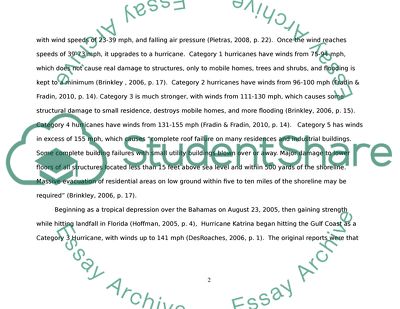Cite this document
(Hurricane Katrina in New Orlean and its Consequences Essay, n.d.)
Hurricane Katrina in New Orlean and its Consequences Essay. Retrieved from https://studentshare.org/environmental-studies/1748600-rough-draft-on-effects-of-hurricane-katrina-on-the-gulf-coast
Hurricane Katrina in New Orlean and its Consequences Essay. Retrieved from https://studentshare.org/environmental-studies/1748600-rough-draft-on-effects-of-hurricane-katrina-on-the-gulf-coast
(Hurricane Katrina in New Orlean and Its Consequences Essay)
Hurricane Katrina in New Orlean and Its Consequences Essay. https://studentshare.org/environmental-studies/1748600-rough-draft-on-effects-of-hurricane-katrina-on-the-gulf-coast.
Hurricane Katrina in New Orlean and Its Consequences Essay. https://studentshare.org/environmental-studies/1748600-rough-draft-on-effects-of-hurricane-katrina-on-the-gulf-coast.
“Hurricane Katrina in New Orlean and Its Consequences Essay”, n.d. https://studentshare.org/environmental-studies/1748600-rough-draft-on-effects-of-hurricane-katrina-on-the-gulf-coast.


